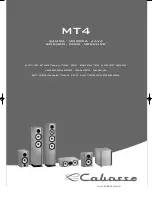
• It adds harshness to the upper midrange and treble by storing time-domain
smearing energy.
• It destroys the delicate phase relationships, which help to establish an ac-
curate soundstage.
Slap echo (see Figure 3) is a common acoustical problem in the typical domestic lis-
tening room because most of these rooms have walls with a hard, reflective nature, only
occasionally interrupted by curtains, wall art, or drapes. The best (but least practical)
solution to eliminate slap echo is nonparallel walls. This is because, rather than support
slap-echo, nonparallel walls allow the sound to diffuse. This approach can be accounted
for during the construction process. For existing rooms, slap echo can also be controlled
entirely by the application of absorptive materials to the hard surfaces. These are absorp-
tive materials that can be used to ameliorate slap echo:
• Illbruck Sonex®
• Air duct board
• Large ceiling to floor drapes
• Carpeting to wall surfaces
In many domestic listening environments, heavy stuffed furnishings reduce slap echo
somewhat. Unfortunately, their effectiveness is not predictable. Diffusers are sometimes
also used to very good subjective effect, particularly in quite large rooms. Sound absor-
bent materials such as described above will alter the tonal characteristic of the room by
making it sound “deader,” less “bright and alive,” and “quieter.” These changes usually
make the room more pleasant for conversation, but sometimes render it too dull in the high
frequencies to be musically involving. Soundtrack effects will be more localized. However,
over-damping the room skews the tonal balance unnaturally toward the bass, and also com-
presses dynamics, robing the system of musical life excitement.
Diffusers, on the other hand, do not affect the tonal balance characteristic of the
room as much. Placed properly, diffusers create a smoother and more open sound. Some
diffusers, due to their construction, create narrow midrange peaks and suck out the warmth
region. Do not use diffusers on the wall behind the speakers or on the sidewalls directly
beside the speakers. It is our experience that all of these room treatment devices should
be used judiciously.
Standing Waves
Another type of reflection phenomenon is “standing waves.” Standing waves cause
the unnatural boosting or accentuation of certain frequencies, typically in the bass, to be
f
igure
3 – c
oMMon
r
ooM
r
eflection
p
robleMs
s
e C T i O n
3 . 2 — r
O O M
a
C O u s T i C s
M
e z z o
C
o n v e r g e n t
S
y n e r g y
o
w n e r
’
S
M
a n u a l
26
27
W i l s o n A u d i o S p e c i a l t i e s
W i l s o n A u d i o S p e c i a l t i e s
Содержание Convergent Synergy
Страница 1: ...M e z z o C o n v e r g e n t S y n e r g y O w n e r s M a n u a l...
Страница 19: ...Wi l s o n A u d i o S p e c i a l t i e s S e c t i o n 4 I n i t i a l S e t u p...
Страница 27: ...S e c t i o n 5 T u n i n g a n d Vo i c i n g Wi l s o n A u d i o S p e c i a l t i e s...
Страница 32: ...S e c t i o n 6 C a r e o f t h e F i n i s h Wi l s o n A u d i o S p e c i a l t i e s...
Страница 38: ...S e c t i o n 8 R e pa i r P r o c e d u r e s Wi l s o n A u d i o S p e c i a l t i e s...















































